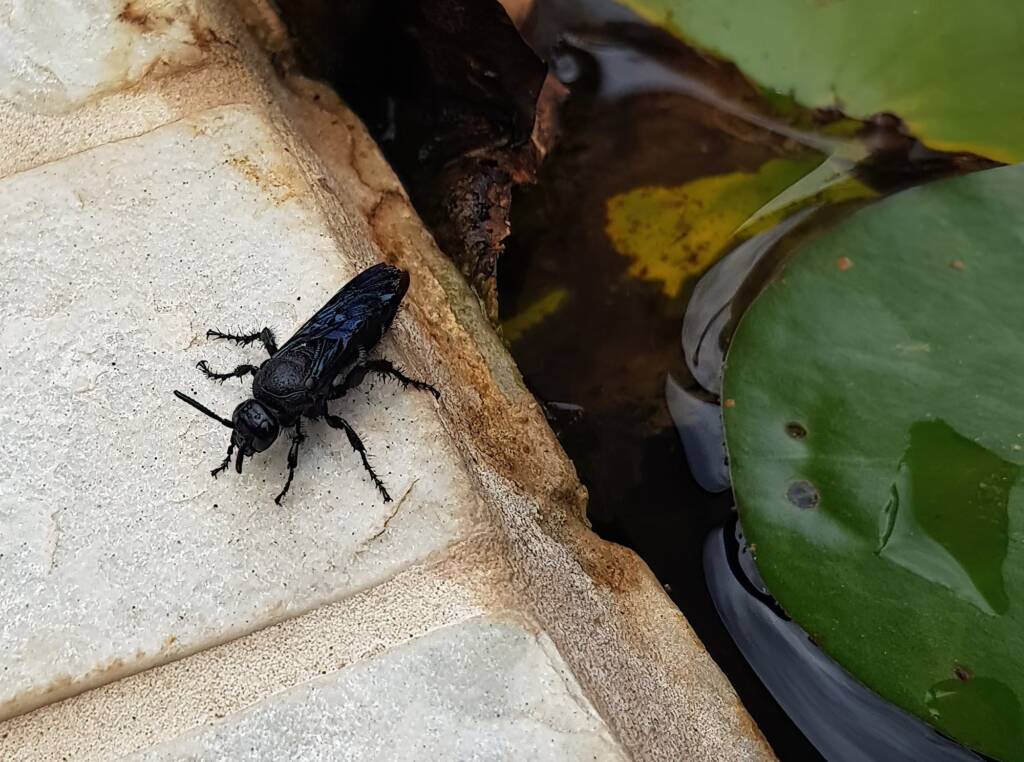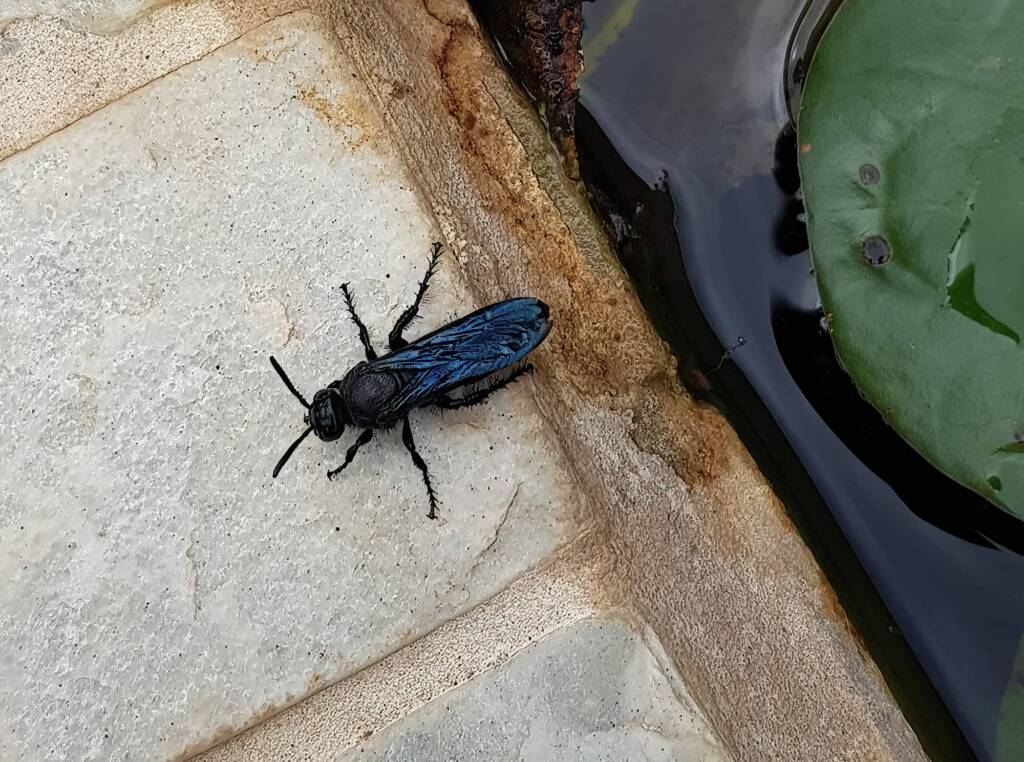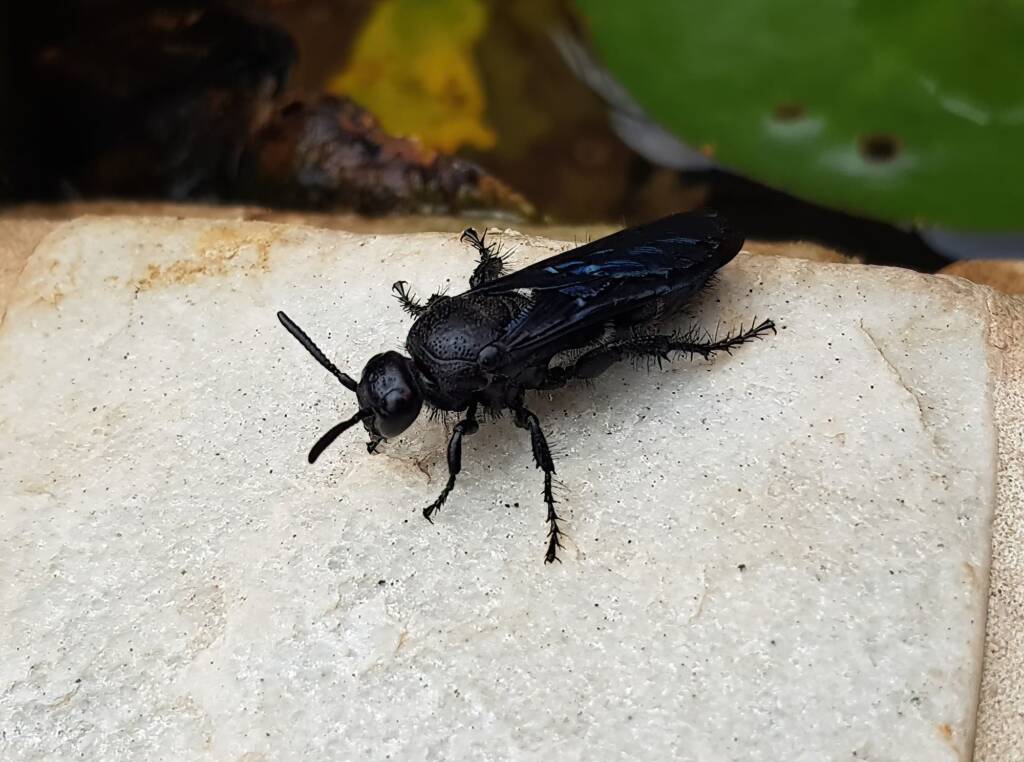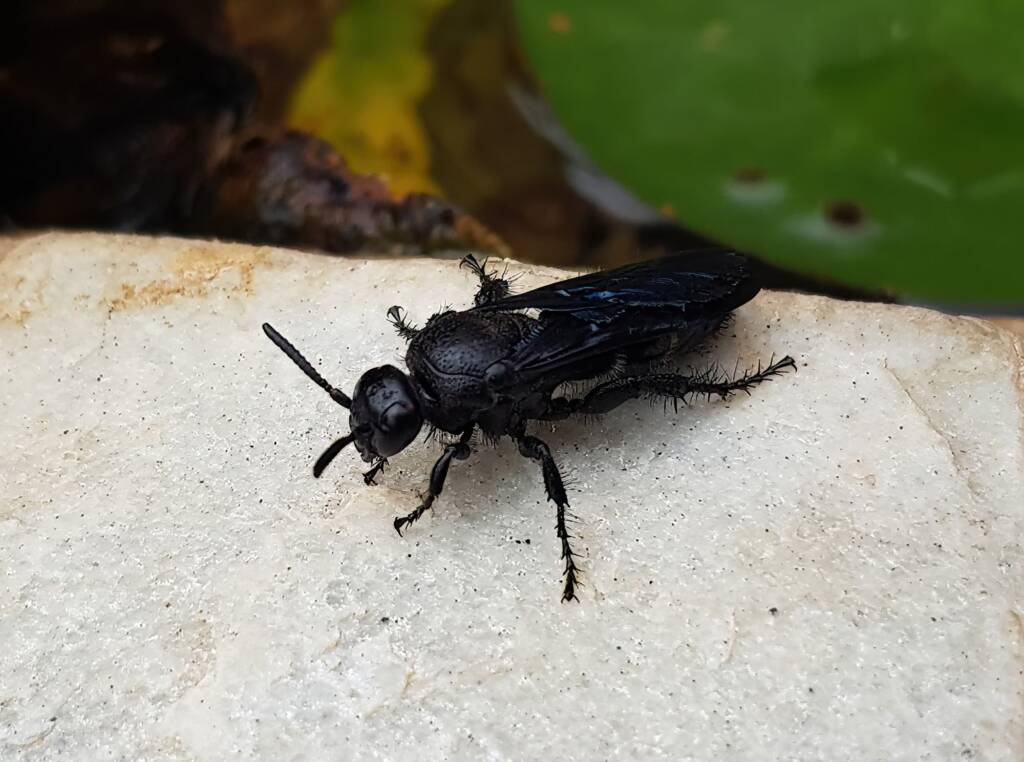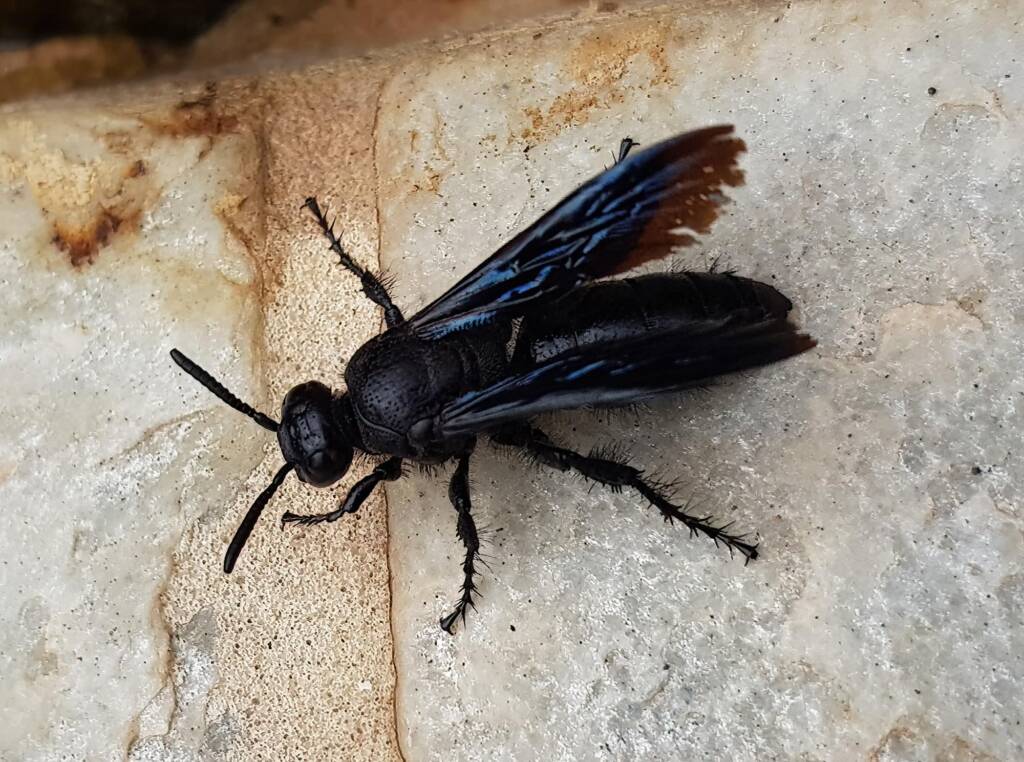— see Flower Wasps | Hairy Flower Wasps | Tiphiid Flower Wasp (family Tiphiidae)
The Blue Hairy Flower Wasp, also known as the Blue Flower Wasp and the Black Flower Wasp, belongs to the family Scoliidae and genus Austroscolia.
They are a dark looking wasp, with smoky black colour wings that have a blue sheen. The wing veins do not reach the end of the wings, and they have thick antennae. Growing up to 3 cm long, the adult wasp feed on nectar. The female Blue Hairy Flower Wasp lay her eggs on the larval beetles.
Pictured here is thought to be the species Austroscolia nitida and was photographed next to a fish pond in Alice Springs (Central Australia), Northern Territory.
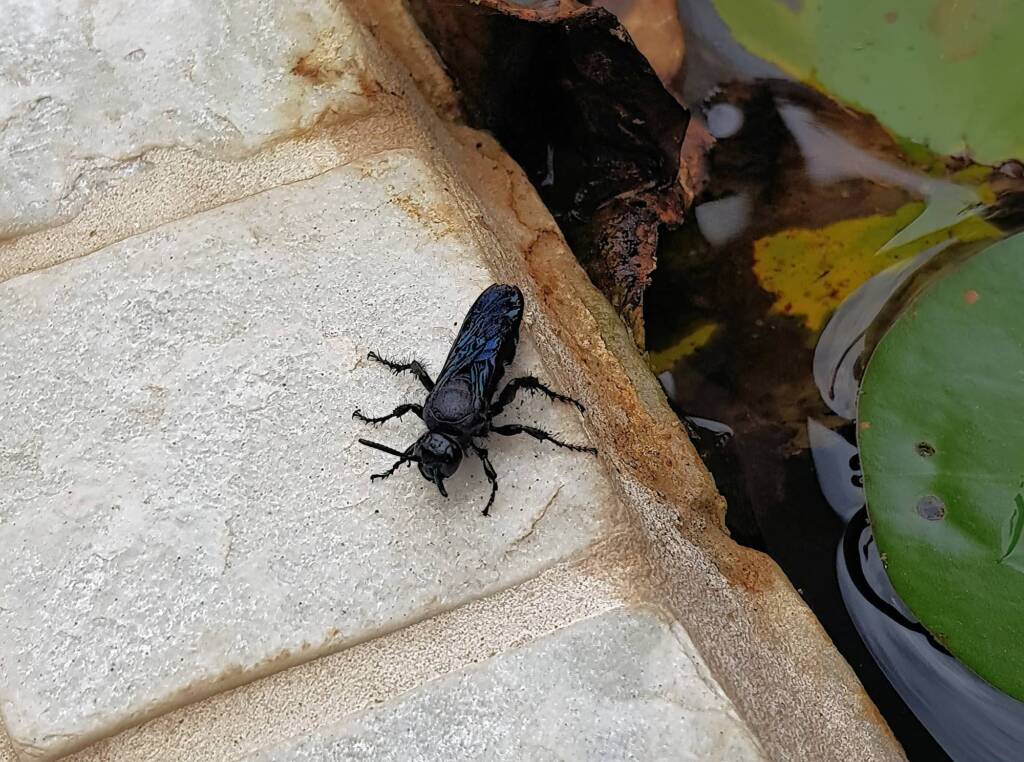
There are currently 3 recognised species in the genus Austroscolia (listed below). Both Austroscolia nitida and Austroscolia soror are very similar in appearance.
With thanks to Matthew Connor1, 2, 3, it is highly likely that this is Austroscolia nitida, being completely blue-black.
Austroscolia soror is described by Museums Victoria4 as being
Wings with distinctive, metallic, blue-purple sheen; veins reaching the margin of the wing. Body black with short antennae. Adult approximately 2.5-3 cm.
Museums Victoria
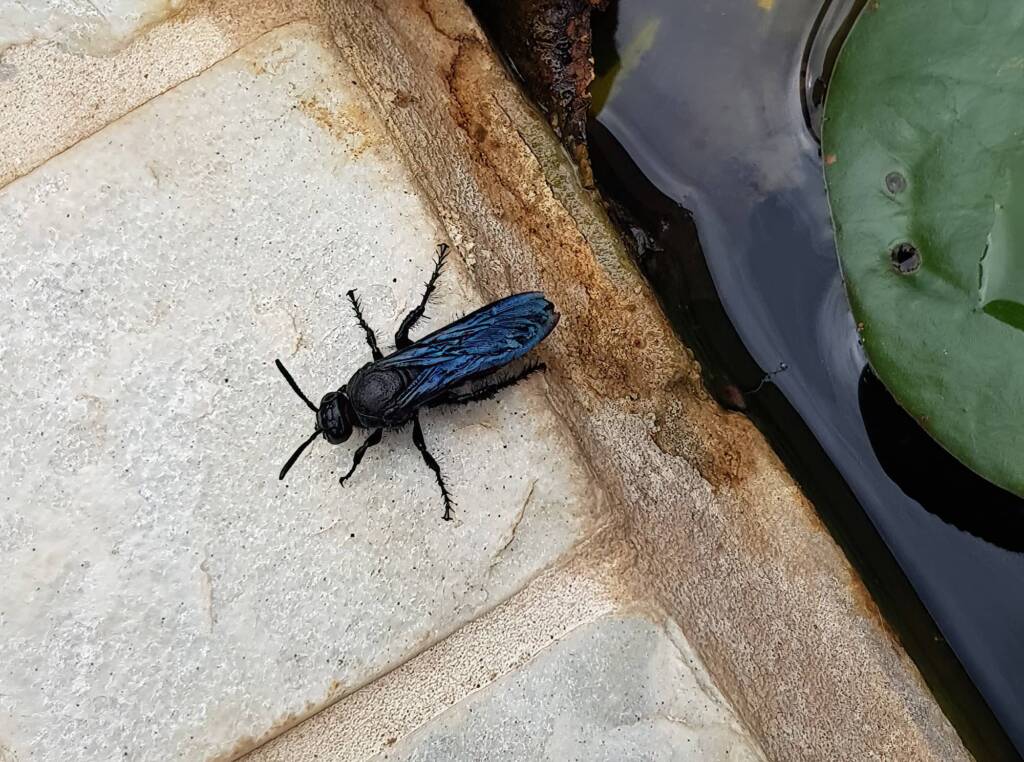
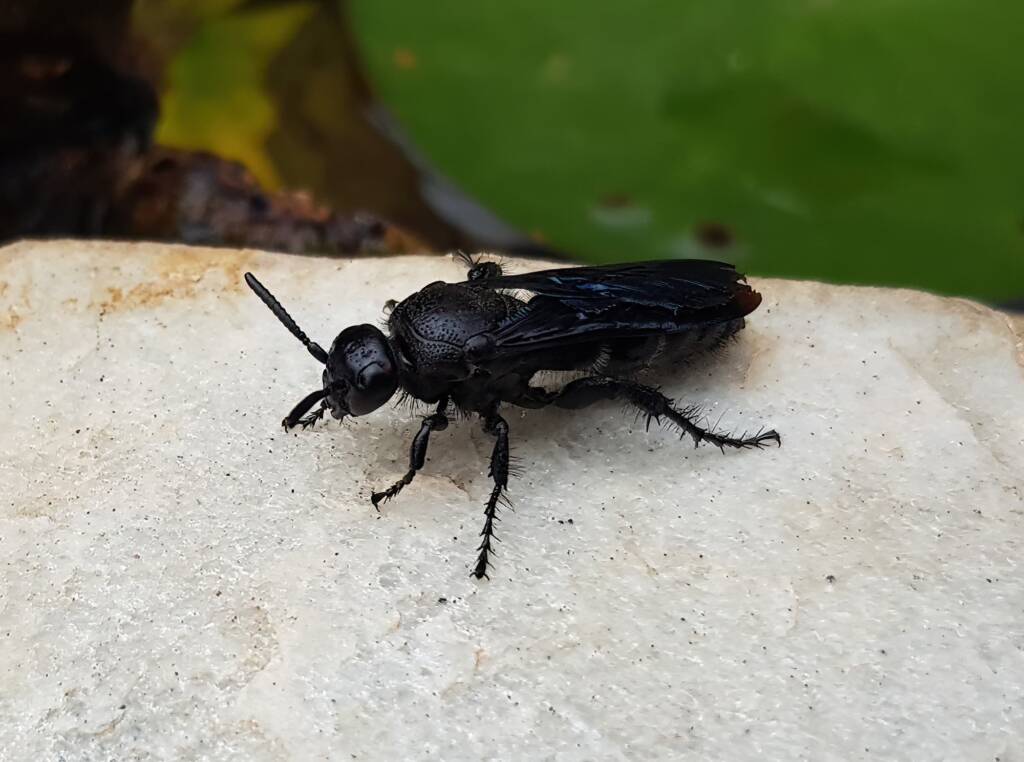
- Scientific classification
- Kingdom: Animalia
- Phylum: Arthropoda
- Subphylum: Hexapoda
- Class: Insecta
- Informal: Pterygotes
- Order: Hymenoptera
- Superfamily: Vespoidea
- Family: Scoliidae
- Genus: Austroscolia
- Species:
- Austroscolia commixta Turner, 1909
- Austroscolia nitida (Smith, 1858)
- Austroscolia soror (Smith, 1855)
Footnote & References
- Many thanks for ID to Matthew Connors and Cath McInnes, members of Entomology Australia “Invertebratology” Facebook group, https://www.facebook.com/groups/507004496955277/
- Impact of obscure external species records on IDing abundant species, iNatForum, https://forum.inaturalist.org/t/impact-of-obscure-external-species-records-on-iding-abundant-species/30558/10
- Austroscolia nitida varifrons (Cameron, 1905), Atlas of Living Australia, https://bie.ala.org.au/species/https://biodiversity.org.au/afd/taxa/acde790e-dc55-4623-87c3-39631b17482d
- Austroscolia soror (Smith, 1855), Hairy Flower Wasp, Museums Victoria, https://collections.museumsvictoria.com.au/species/8108
- Austroscolia Betrem, 1927, Atlas of Living Australia, https://bie.ala.org.au/species/https://biodiversity.org.au/afd/taxa/7d6c2f9b-6455-49e8-908b-9995a82515e2
- Austroscolia soror (Smith, 1855), Atlas of Living Australia, https://bie.ala.org.au/species/https://biodiversity.org.au/afd/taxa/b9e3095d-089d-4190-92ae-3be727ebcd9b
WaspsWasps Index Australian Large Wasps Australian Mud Nest Wasps Mud Wasp Velvet Ants Abispa ephippium Acarozumia amaliae Aulacidae Australodynerus Bembix Bembicinae Blue Hairy Flower Wasp Braconidae Chrysididae Cryptocheilus bicolor (Orange Spider Wasp) Delta latreillei (Potter Wasp) Eumeninae Ferreola handschini (Orange-collared Spider Wasp) Flower Wasps Gasteruptiid Wasp Hairy Flower Wasps Isodontia (Grass-carrying Wasp) Lissopimpla excelsa (Orchid Dupe Wasp) Mutillidae Paralastor sp. Pseudabispa bicolor ssp. nigrocinctoides Radumeris radula (Yellow Hairy Flower Wasp) Radumeris tasmaniensis (Yellow Hairy Flower Wasp) Sceliphron laetum Thynnid Wasps Tiphiidae Yellow and Black Wasp
InsectsBees Beetles Blattodea Butterflies Coleoptera Cicada Crabronidae Diptera Dragonflies & Damselflies Formicidae Hemiptera Heteroptera (True Bugs) Mango Planthopper Moths Orthoptera Orthopteroid Processionary Caterpillar Stink Bugs, Shield Bugs and Allies Syrphidae Wasps Water Scorpion (Laccotrephes tristis) Witchetty Grub

